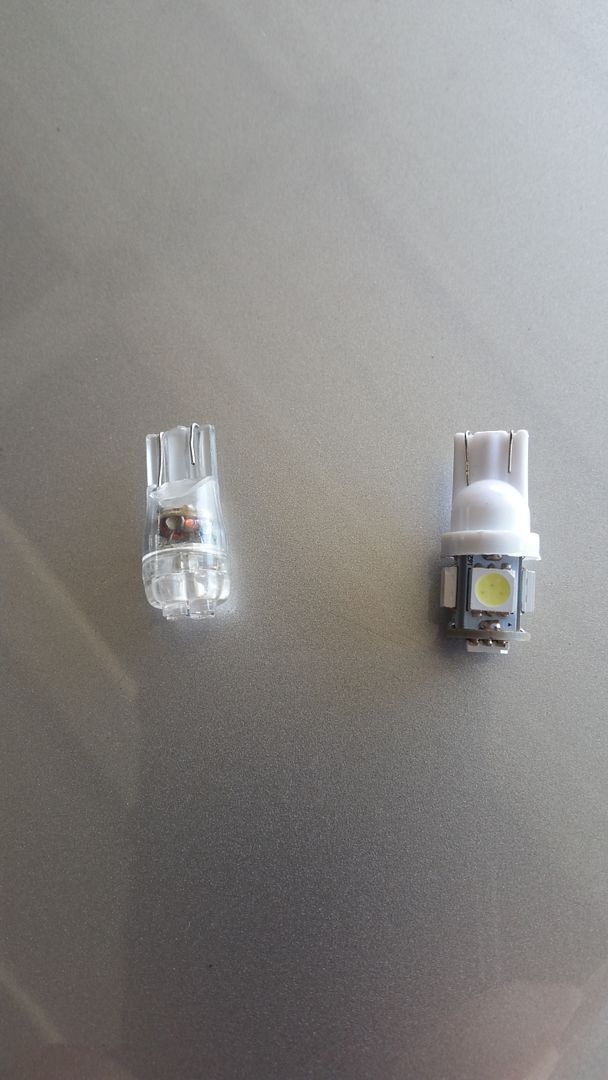Quote:
Originally Posted by ksa8907

Visual comparison of cheapo led's and "super bright led's". Cheapo one is on the right.
 |
These aren't really comparable. Superbright used to sell LEDs like the one on the left, but those are getting harder to find because they use chips with less output and are a directional board, whereas the "cheapo" on the right is what Superbright mainly sells now, and is designed for nearly 360-degree output.
There are many, many threads on LEDs for automotive use, LED design, LEDs in incandescent reflectors, etc. on HIDplanet. I went full-LED a while ago (the only incandescent bulbs left are the high beams), and, to get things just right, there will always be something to tinker with. I'm happy with all my interior lights and license plate lights, but will probably replace my turn signals and reverse lights at some point with a design
like this that will fill the lens better and be brighter than the lower-lumen bulbs I have in there now.
Superbrightleds has good prices and good selection; V-leds cost more but are a generally more-reliable product with their own proprietary designs, and crazy expensive if you get their Triton line (which are length-adjustable, so they can be tuned to your particular housing). You can find a wide selection of LEDs on Amazon, but it's always a crapshoot depending on the vendor. Philips has a line of LEDs (in limited bulb sizes) designed for incandescent replacement available at Autozone, and Osram is coming out with their own line of automotive LED replacement bulbs soon. The Philips LEDs have something like a 10- or 12-year warranty, and I expect the Osrams will too.
Also, in terms of power-to-output ratio, red LEDs are least efficient, then amber, then white. To produce these colors, the LED (which is blue) has to be filtered. For an example, the bulbs I linked to are available in red (700 lumens/amp), amber (875 lumens/amp) and white (1363 lumens/amp).